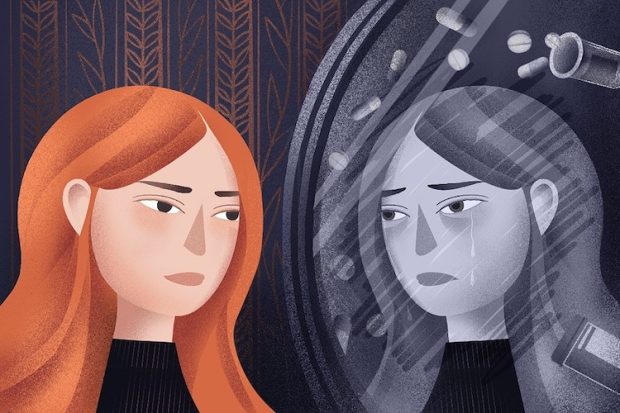The Human Visual Search Engine
Radiologist Jeremy M. Wolfe on the searches we perform every day, airport screening, and search strategies
Let’s start by defining what mood disorder is because some people might be surprised that it even has a neurobiology. When we talk about mood disorders, we really mean the tendency for some people to get depressed in the face of adversity in their life. That happens to quite a lot of people in the course of a full lifetime, so as many as 10-15% of people at some stage may become quite significantly depressed, and they become depressed usually because, on the one hand, they have a risk for getting depressed, they have a family history of depression very commonly, and on the other hand, they have adversity in their life that represents disappointment: breaking of relationships and all other kinds of problems that are essentially, as we would say, depressing. What happens after such events is that some people find it very difficult to process the aftermath, the grief if you like, and the grief turns into a kind of long-term depression of mood and inability to concentrate or dropping out from social activity and in the most severe forms suicidality and actual suicide.

So depressive episodes are really not uncommon. What I’m proposing is that this isn’t simply a failure of the software of the brain, but it’s also a failure to some extent of the hardware of the brain. What do I mean by that? When we talk about depression, we think of it as being something we all understand, so I say when my football team loses, I’m depressed, the players say they’re depressed. But in fact, they know that within a few days, they’ll have forgotten why they were depressed, and they certainly won’t remain depressed. So we’re all familiar with that transient mental state of depression, but we’re used to it being really quite robustly plastic, so we don’t get stuck in that kind of mentality.
So for people who do get stuck, the question is, is there something that is wrong with the software? Is it something the way they think about their symptoms, the way they think about their life? Is it something they need to unlearn by talking about it? Or have they actually got something that is stuck at a more physical level, and the expression of that physical sticking is the rumination and the repetition of the concerns and the worries that are stopping people from moving on with their lives?
We think that there’s scope for thinking that both kinds of mechanisms are involved. Now, everyone is very happy with the idea of a psychological explanation for depression, but they’re not always quite as happy with a biological explanation of depression. A psychological explanation for depression leads very simply to ideas about psychotherapy and psychological treatments, and they are often based on trying to change the way we think (cognition) and our behaviour (in other words, what we do) and put that together. It’s often called cognitive behaviour therapy. That’s become very widely adopted as a way of treating depression. But it’s only effective in about 30-40% of cases.
So, very commonly, one’s left with the problem of how to treat the patient who is not responding to CBT or who has very little access to CBT in the first place (that will be commonly the position for people living in country areas who don’t live in large towns and don’t have specialized services close to them). So if a doctor sees a patient who’s severely depressed and he can’t offer them CBT, then are you going to address the hardware issue of depression, in other words, the chemistry? Are you going to treat them with medications? And if you do, you discover that you get again about a 40% very good response to medications and a 60% that’s pretty unsatisfactory. But the 40% who do get better get properly better, and they’re usually able to complete a course of treatment without severe adverse effects. They’re also usually able, if they wish, to give up the medication although if the depression is recurrent, frequently occurs, or if they get stuck in chronic depression, they may wish to continue medication that works, and that’s obviously an option.
This brings us round to the idea that drugs work in depression which is sort of surprising. If you start with the view that the depression is about disappointment and human ambition and breaking relationships, then how would a drug possibly work to make that better?
So, there’s been a lot of interest since the 1950s in the brain chemistry that underlies depression. That essentially is the same brain biochemistry that underpins the perception of pain, the understanding of reward and also usually the making of decisions. All of these things have a kind of neurochemistry, which is surprising but true, and if you modulate the functions of these monoamine neurotransmitters in the brain in animals, you can show that you can influence how the animals behave. Similarly, we think, by the same token, that when we modulate those neurotransmitters in our brains, it modulates the way we behave.
The key transmitter that has been identified and the one that everyone has heard about is serotonin. Serotonin is synthesized in neurons in the brain, a very small bundle of neurons right deep in the base of the brain. Those neurons project all over the neocortex, all over the part of the brain that we think is associated with cognition and feeling. The way in which serotonin exerts its influence is not yet fully understood, but we know that it’s important because drugs like LSD, the psychedelics, work exclusively on the serotonergic system. So, the serotonergic system is really important for how we make sense of our environment on a chemical level. What seems to be the case is that if you boost serotonin function in patients with depression, then you get about 40% of them better, and we seem to get them better mainly by reducing the negative effects of the mood. Negative affect becomes less, and patients are able then to recover by reducing negative affect but also by reacquiring positive affect, and so they scramble out of their disordered mood by that kind of mechanism.
We think that psychological treatment that gets them active again, that makes them behave in a way that is less depressing and less likely to be unrewarding combines with the neurochemistry to make people better.
So, all of this is put together under what is sometimes called the monoamine theory of depression. There are three other amines that are sometimes talked about noradrenaline, dopamine and histamine. The important ones are probably dopamine, noradrenaline and serotonin, as I’ve already mentioned. Those three chemicals work together in neural networks that subserve mood and reward and all the things that we think are important in the human brain and the emotions of the human brain.
So, as well as moving to a chemical theory of depression, we’re moving to an anatomical theory of depression. In the future, we think we will be able to understand why some people are more vulnerable or why people become more vulnerable by looking at how literal physical connections within the brain, which these chemical transmitters work through, are modified and different in people who are at risk of the depression. We think, as we move forward with that, that by understanding better how this all works, we might actually get better treatments so that our psychological treatments are better than 40% and our drug treatments are better than 40%. That really is the future that we hope we’re going to get to in the next 20 years.

Radiologist Jeremy M. Wolfe on the searches we perform every day, airport screening, and search strategies

Neurobiologist Sophie Scott on human speech, exaggerating gender differences, and the perception of voice info...

Computer scientist Erol Gelenbe on different types of cyber-attacks and end-to-end security of health data exc...